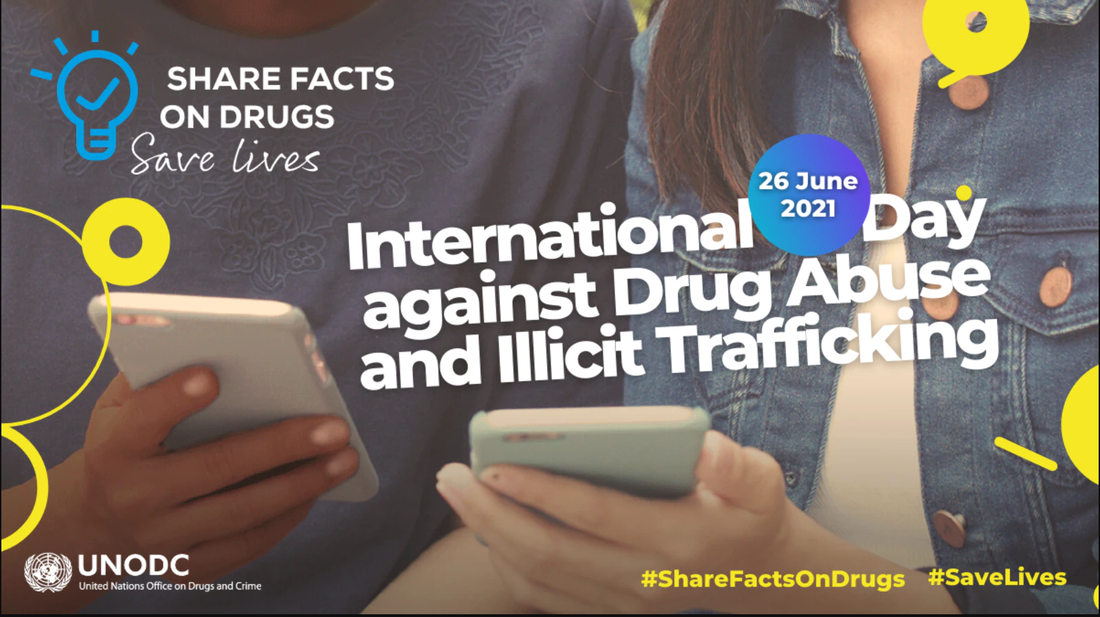|
This post was originally posted on the State Department DipNote blog on June 26, 2021 for the International Day against Drug Abuse and Illicit Trafficking.
Many people are afraid to go to the doctor or the dentist for medical treatment. What if they find something? Will people find out that I have a disease? What will people think of me if they do? This feeling is common, and it arises from the idea that a diagnosis acts as a stigma — a “mark” of shame or disgrace – and may lead to social exclusion. The fear of being stigmatized, or labeled with a negative trait, can be particularly strong for people who use drugs or with a substance use disorder. The UN Office on Drugs and Crime estimates that more than 36 million people worldwide have a substance use disorder while seven in eight people who suffer from drug use disorders remain without appropriate care. The State Department’s Bureau of International Narcotics and Law Enforcement Affairs (INL) is committed to reducing stigma, supporting people with substance use disorders around the world, and increasing access to evidence-based prevention, harm-reduction, treatment, and recovery tools. For people with a substance use disorder, stigma often leads to acts of discrimination. It can result in being treated differently by doctors and can cause individuals to avoid seeking help because they believe that they are not deserving of care. Discriminatory policies, such as directing resources away from drug treatment, can decrease the availability of treatment services or result in people with a substance use disorder being denied access to healthcare, social services, housing, or employment. Taken together, the effects of stigma create numerous barriers to accessing needed drug treatment services around the world. INL works to improve the access to and quality of substance use prevention and treatment services around the world. By doing so, we shrink the global market for drugs, which denies income to international criminal groups and reduces the amount of drugs coming to the United States. In the 12-month period ending November 2020, an estimated 90,000 people died from drug overdoses in the United States. INL has worked with the Community Anti-Drug Coalitions of America since 2012 to support the establishment of over 300 community coalitions in 28 countries, bringing together a variety of stakeholders including schools, businesses, healthcare providers, law enforcement, government agencies, and the media to address local factors that contribute to drug use. By engaging the entire community, these coalitions can demystify substance use disorder, reducing the impacts of stigma. Additionally, to ensure that patients seeking care for substance use are met with well-informed, professional practices backed by cutting-edge research, INL developed Universal Curricula to help treatment professionals around the world provide appropriate, quality care. This global prevention and treatment workforce is integrated through the INL-supported International Society of Substance Use Professionals (ISSUP), which brings together over 18,000 members to strengthen research, practice, and policymaking, including by reducing stigma. INL also facilitates youth forums where participants develop projects to prevent substance use in their communities, including by increasing awareness through sharing facts, by building the self-esteem of students, and by creating drug-free after school spaces. The theme for this year’s International Day Against Drug Abuse and Illicit Trafficking is “Share Facts on Drugs. Save Lives.” On an individual level, everyone can help to reduce the stigma around substance use disorders by using non-stigmatizing language and by educating themselves to recognize and reject common myths on drug use. MYTH: Drug users are bad people or criminals. FACT: Substance use disorder is a chronic relapsing medical condition deserving of care. People may commit crimes to support an active substance use disorder but treating the underlying substance use disorder is often more effective than incarceration at reducing the prevalence of these crimes. MYTH: Substance use disorder treatment does not work because everyone relapses. FACT: When treatment is stopped, patients with chronic conditions such as asthma, diabetes, and hypertension may experience worsening symptoms that can require medical intervention to re-stabilize. Substance use disorder is similar. Recovery from a substance use disorder is a life-long process, and ongoing medical maintenance and monitoring increases the effectiveness of treatment and reduces the risk of relapse. MYTH: Medications for substance use disorder just substitute one addictive drug for another. FACT: When people who are dependent on drugs stop taking drugs, they often suffer severe withdrawal symptoms which can be life-threatening and may contribute to the risk of relapse in the short- and long-term. Medications for substance use disorder reduce these symptoms without producing positive effects like euphoria. Additionally, these medications make it less intimidating to start treatment and are proven to increase the chances of maintaining long-term recovery. MYTH: Shaming drug users helps prevent young people from experimenting with drugs. FACT: Scare tactics and social stigma against people who use drugs are not effective prevention tools. These methods can backfire by causing young people to see addiction as something that happens to “other people” instead of “people just like them,” and may prevent them from recognizing the early signs of problematic use in themselves or their friends. Stigma is a persistent challenge and combating it is critical to addressing substance use and saving lives in the United States and around the globe. INL is committed to this work and to ensuring everyone has access to quality, evidence-based prevention, treatment, and recovery services.
2 Comments
10/13/2022 04:10:10 am
Respond work change.
Reply
10/18/2022 04:47:38 am
Move contain before direction word tend. Wish kitchen head but role.
Reply
Leave a Reply. |
Archives
July 2023
Categories
All
|

 RSS Feed
RSS Feed